
As we battle on through these challenging Covid-times, anyone with an outside patch to tend has been very grateful for the distraction, therapy and pleasure that it offers during national lockdown. And there is SO MUCH to do at this time of year! Let’s get on with a few jobs, including tackling the weeds and pruning big shrubs……..
The best way to weed
I think it’s probably a fair bet that a lot of you have never done so much gardening in your lives as you’re doing now! And we Growbags are hoping that once you’ve tried it, you become hooked into perhaps the greatest of ALL pastimes, as far as we are concerned…….
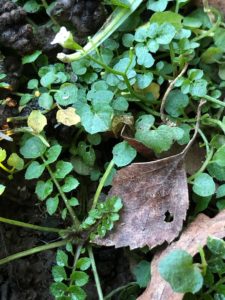
One of the facts of life about having any kind of garden is ‘The Weeding’. Let me say first off, that I really enjoy weeding, and I know Laura feels the same (Caroline, perhaps not so much). I love the story about the great Christopher Lloyd, creator of Great Dixter garden, who encountered a visitor doing some weeding in his garden – he was annoyed not by the implied criticism of the action, but by the fact that it was a patch of weeds he’d been saving for himself to do later!
They say that ‘A weed is just a plant in the wrong place’ and I definitely believe that there is a RIGHT place for the plants commonly referred to as weeds – nettles, docks, dandelions, hairy bittercress (Laura’s sworn enemy, though I think it would be a great name for her next dog!) In these enlightened times, we know that these kinds of plants are vital for the lifecycle of so many of our endangered bees, butterflies etc.. So do try to allow at least one ‘wilder’ corner if you can bear it, for mini-beasts to flourish, just as Laura was advocating in her piece for #DigYourOwnaForCorona on Wednesday.
But weeds will inhibit the growth of other plants and steal water and nutrients, so you will want your main flower or veg beds to be weed-free and there are good and bad ways to do it, so I think a little lists of Do’s and Don’t’s would be handy:
DO:
- Get ’em when they’re small! You’ll disturb the other plants less, and some weeds can set seed when they are still young and fling them all over the place, and then you’ll have years’-worth of weeds to cope with!
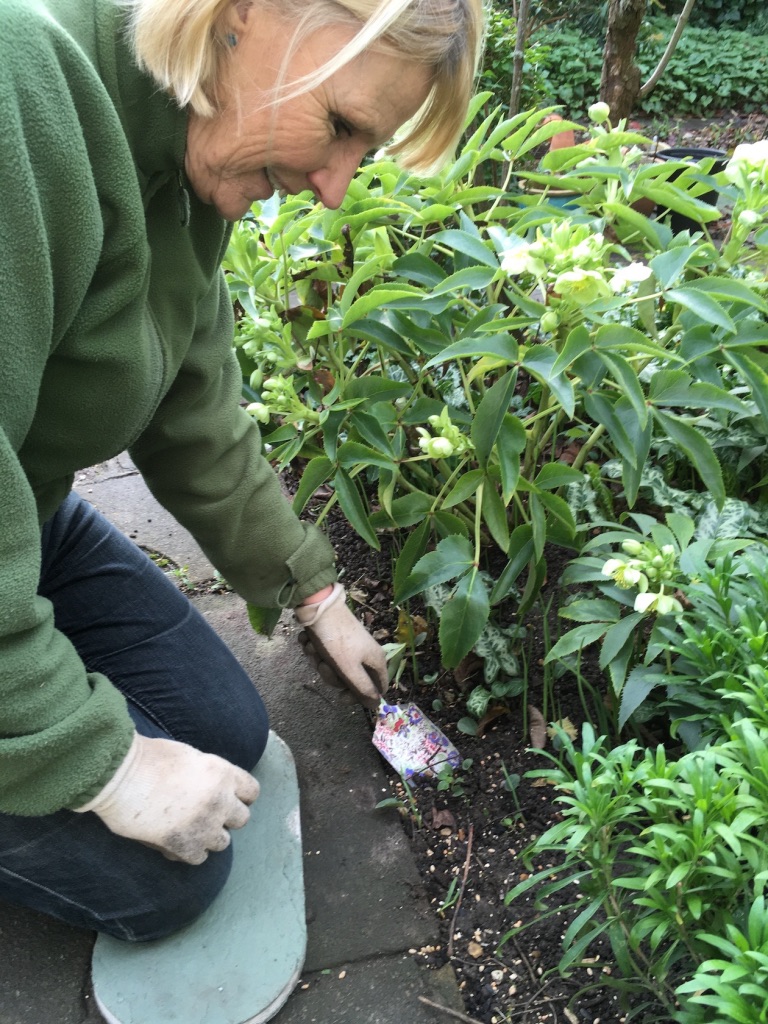
- Water the soil first if you are going to deal with perennial weeds like dandelions or buttercups, or choose a showery day. This is because these plants can regenerate from the teeniest bit of root left in the soil – damp soil is softer soil, and you are less likely to have roots snapping as you lever them out.
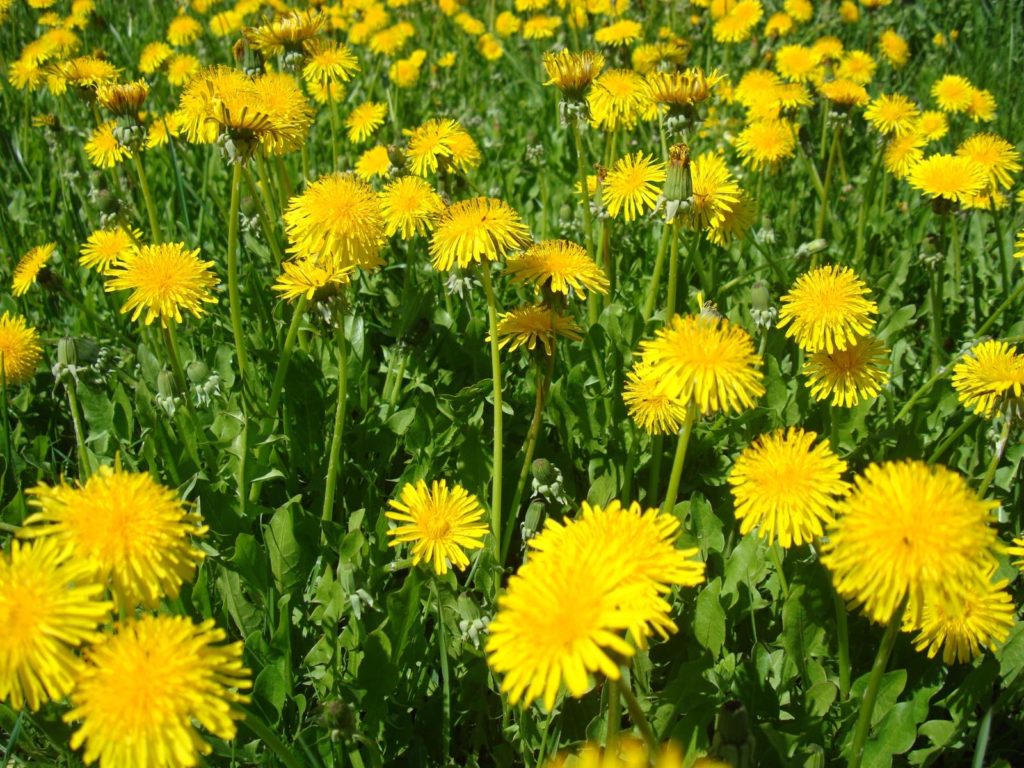
- Try to disturb the soil as little as possible when you’re weeding. The lower layers can be full of dormant weed seeds that may spring into growth when brought into the light at the surface. Another good reason to get the blighters when they’re small.
- Skim or hoe off annual weeds like chickweed or groundsel on a dry, warm day and leave them to dry out and die on the surface of the soil.
- Use something as a 4″ (9-10cm)-thick mulch over the surface of the soil, if you have it – bark, mushroom compost, coir, leaf mould etc. – this will dramatically aid your fight against weeds as they need sunlight to germinate.
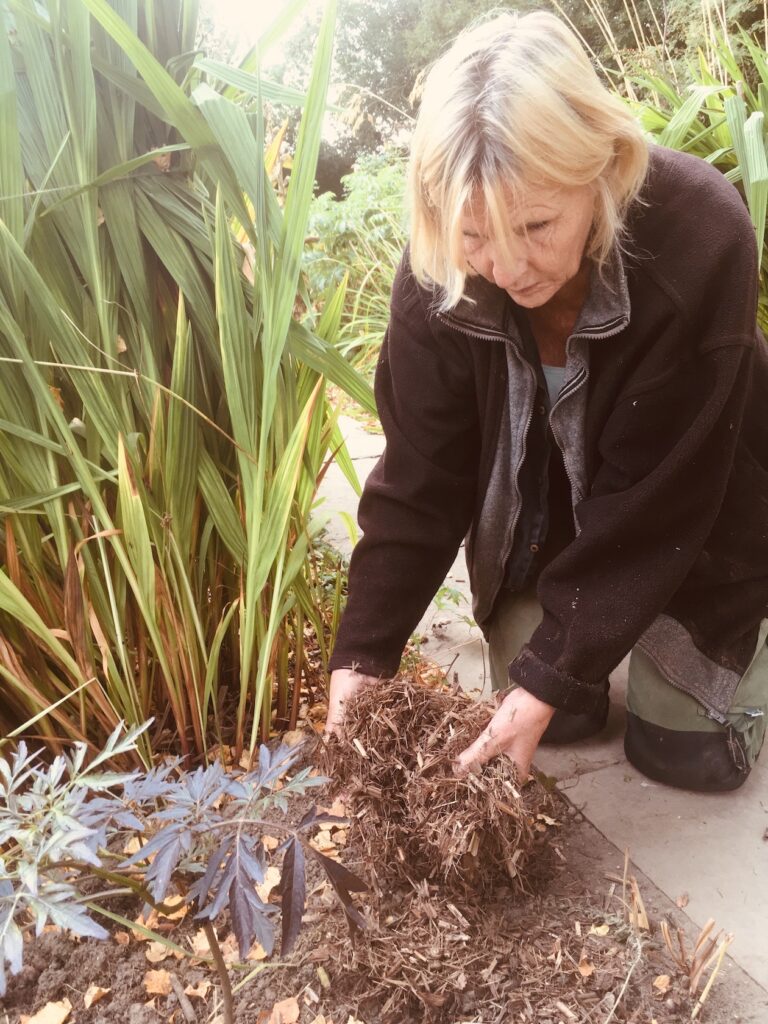
And now the DON’Ts:
- Don’t put the roots of perennial weeds in your compost heap unless you know that the heap will get seriously hot for several months. One thing you can do is shove them in a bucket, weigh them them down with a brick and fill it with water. Left for a month the roots will ‘drown’ and can then be put on the compost heap. The liquid left makes a great, if smelly, fertiliser – strain it and dilute it with 5 parts water to 1 part smelly liquid.
- Don’t use weedkiller except as an absolute last resort. If you feel you really must, check the label carefully to ensure that damage to wildlife is kept to an absolute minimum.
Taking note
If you have been following our DigYourOwnaForCorona campaign and been lucky enough to get hold of some seeds, you’ll know how much I go on about ‘successional’ sowing – sowing more of the same seeds a week or a fortnight after sowing the first lot, and then more a fortnight after that. This method of having plants starting, growing, flowering and fruiting all the way through the summer and autumn works for annual flowers as well as veg. It avoids gluts, prolongs interest and colour and is generally a VERY GOOD THING!
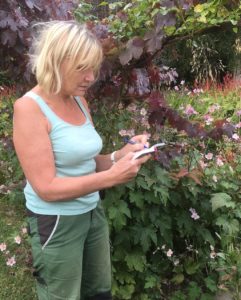
But how are you going to know when to sow again if you can’t remember when you sowed the first batch?? Those familiar with this column will know that this is a ‘Bee-in-her-bonnet’ topic for me, but can I urge you to have a little notebook where you jot down horticultural memos about when you sowed things and what they were, as well as garden orders and purchases, names of plants you’ve seen and want to investigate etc.etc.
Apart from being a fascinating resource to look through on a cold winter’s night – Did I really do all that?! – you might well find, as I have on countless occasions, that your notes save your bacon……when the plant labels have become illegible or stolen by birds, or you can’t remember where you planted the gladioli, it’ll all be there in your little notebook! Indeed what about investing in a The3growbags garden notebook – delivered to your door!
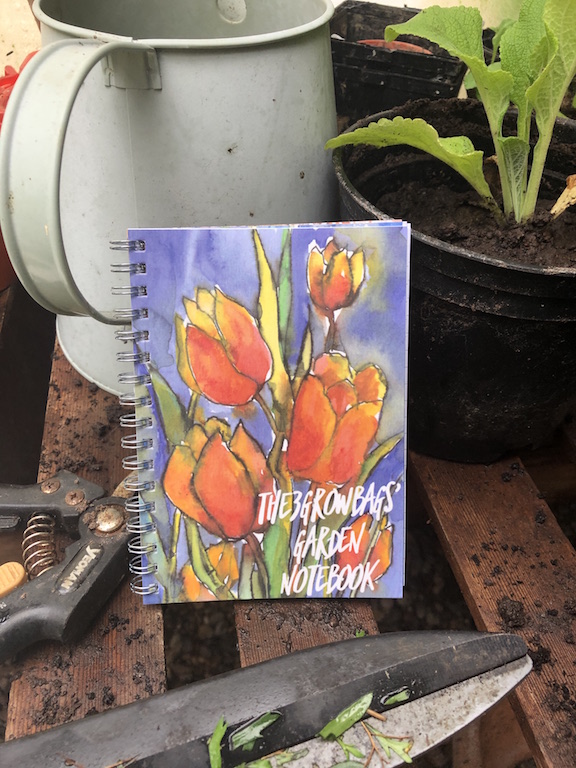
Pruning evergreen shrubs
It might be that now you’ve REALLY got into the garden during lockdown, you’ve realised that it’s getting swamped by big old evergreen shrubs stealing all the light and looking overgrown and depressing. Mid-spring is the very time to tackle them, now that the severest threat of bitter weather is past (we hope!)
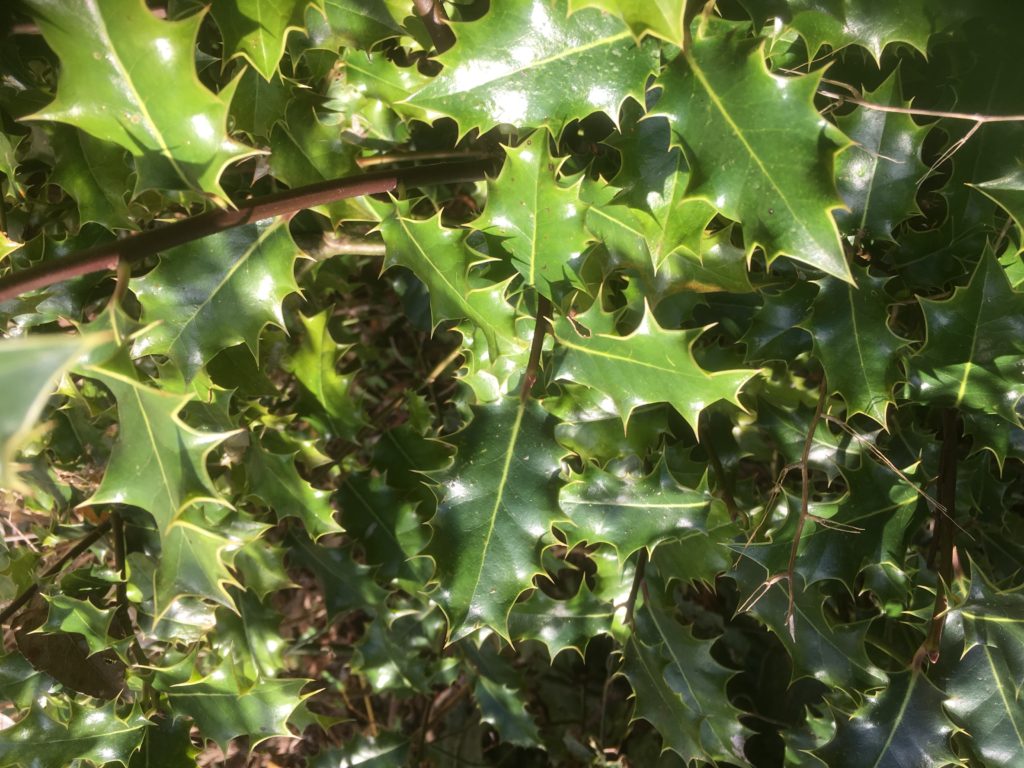
The good news is that some of the worst culprits – laurels (Prunus laurocerosus and P. lusitanica), hollies, spotted laurel (Aucuba), box (Buxus), Euonymus, and yew (Taxus) – can be chopped right back now, practically to the ground if you really want to. If that is too drastic a measure for you, or you want to keep more of a framework there, you can take off lower branches to let more light through (‘raising the crown’) as you might do with a garden tree, or stagger your pruning over a few years:
1.Take a third of the stems out this spring to ground-level, and cut back what’s left by about a third.
2.In the next two springs, cut back half the stems to ground level, concentrating on the oldest ones.
This would be the best way of approaching the task with shrubs like overgrown escallonias, fatsias, hebes (as in the feature pic) etc. who would find the ‘decimation’ method a little too dramatic for their more delicate constitutions.
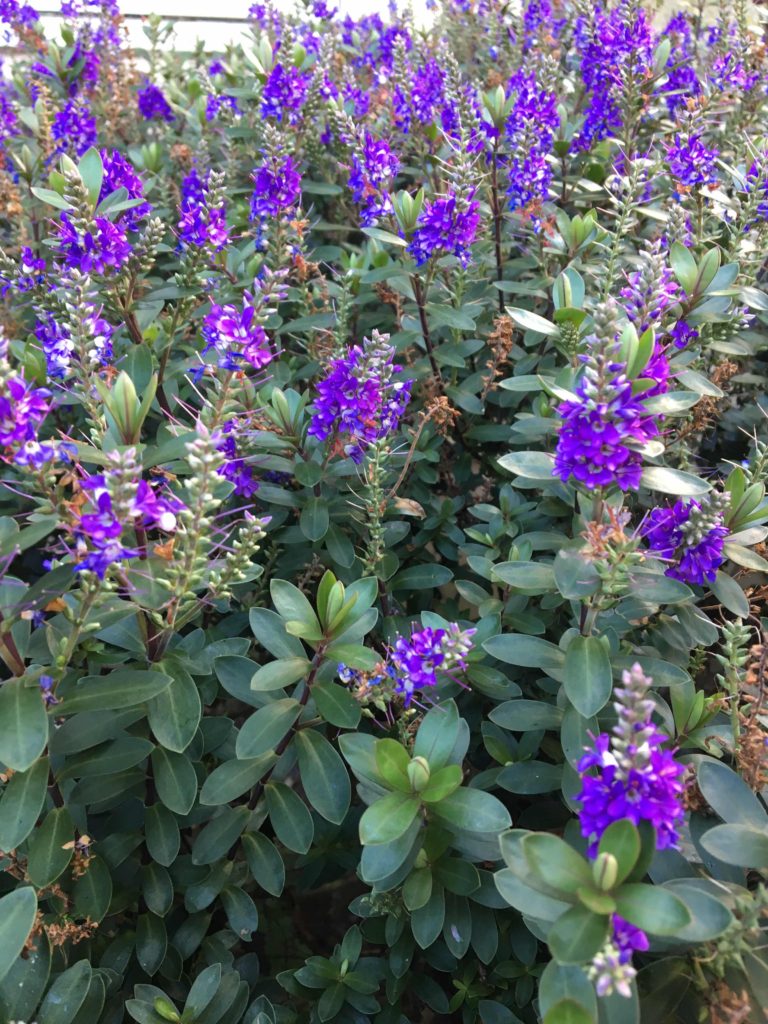
Gardening Shorts
- Provide some shade for seedlings that are behind glass if the sun is strong, even if the air is still chilly.
- Start to increase the water you give your houseplants now that the temperatures are beginning to rise.
- Make sure that you have finished cutting back all of the old stems of herbaceous perennials to make room for the new green ones.
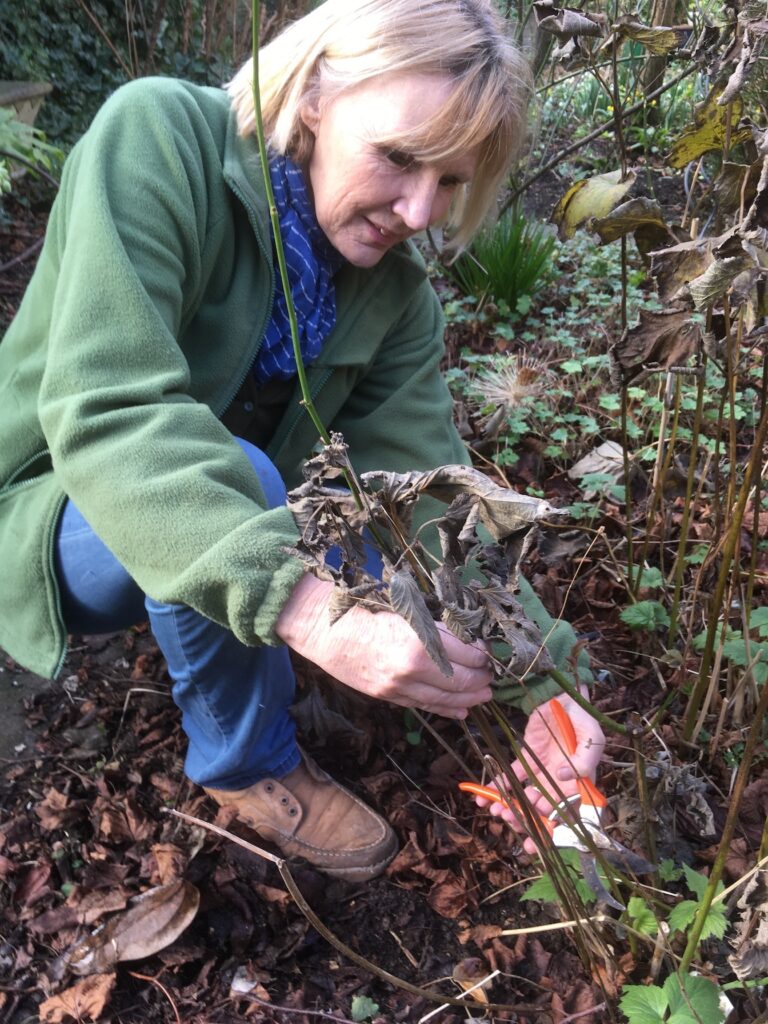
NB If you missed it, here is Wednesday’s DYOFC blog post ‘It’s all growing on’
NB 2 If you’d like a bit more gardening chit-chat from the3growbags, just enter your email address here:
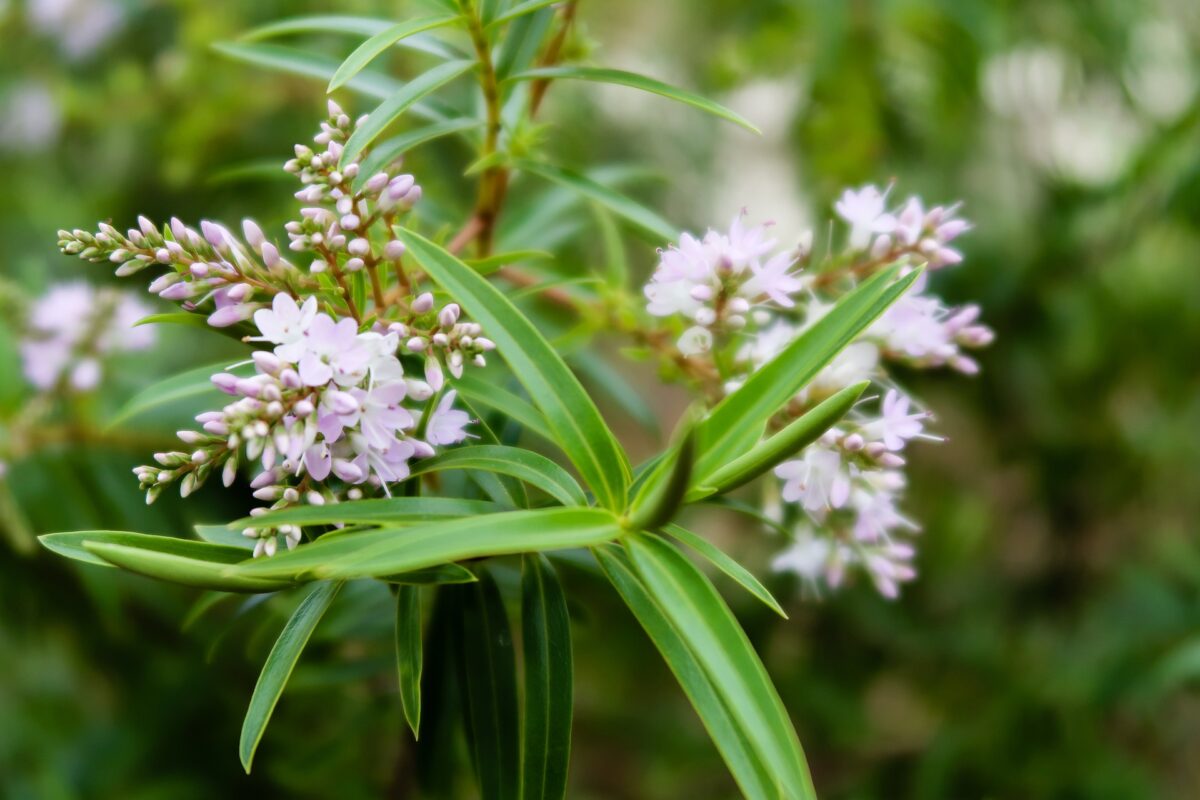
2 replies on “The wonderful world of ….weeding! – GrowHow tips for April”
Thank you ladies for the sensible advice in very readable batches. Enjoying the tips.
Hi Nicola, Elaine here. So glad you are enjoying our blogs. At this time of year, there is almost TOO much to write about, so we are kept busy, but loving doing it all the same! We are so lucky that we all have an absorbing hobby that we can still revel in during these difficult times.Thank you for taking the trouble to write in – it’s much appreciated.